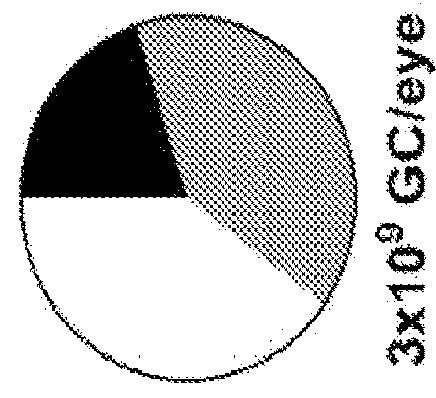Treatment of Ocular Diseases with Fully-Human Post-Translationally Modified Anti-VEGF Fab
a technology of post-translational modification and treatment of ocular diseases, which is applied in the direction of immunoglobulins, peptides, drug compositions, etc., can solve the problems of significant burden on patients and achieve the effect of enhancing the cell line used for production
- Summary
- Abstract
- Description
- Claims
- Application Information
AI Technical Summary
Benefits of technology
Problems solved by technology
Method used
Image
Examples
example 1
6.1 Example 1
Bevacizumab Fab cDNA-Based Vector
[0243]A Bevacizumab Fab cDNA-based vector is constructed comprising a transgene comprising Bevacizumab Fab portion of the light and heavy chain cDNA sequences (SEQ ID NOs. 10 and 11, respectively). The transgene also comprises nucleic acids comprising a signal peptide chosen from the group listed in Table 1. The nucleotide sequences encoding the light chain and heavy chain are separated by IRES elements or 2A cleavage sites to create a bicistronic vector. Optionally, the vector additionally comprises a hypoxia-inducible promoter.
example 2
6.2 Example 2
Ranibizumab cDNA-Based Vector
[0244]A Ranibizumab Fab cDNA-based vector is constructed comprising a transgene comprising Ranibizumab Fab light and heavy chain cDNAs (the portions of SEQ ID NOs.12 and 13, respectively not encoding the signal peptide). The transgene also comprises nucleic acids comprising a signal peptide chosen from the group listed in Table 1. The nucleotide sequences encoding the light chain and heavy chain are separated by IRES elements or 2A cleavage sites to create a bicistronic vector. Optionally, the vector additionally comprises a hypoxia-inducible promoter.
example 3
6.3 Example 3
Hyperglycosylated Bevacizumab Fab cDNA-Based Vector
[0245]A hyperglycosylated Bevacizumab Fab cDNA-based vector is constructed comprising a transgene comprising Bevacizumab Fab portion of the light and heavy chain cDNA sequences (SEQ ID NOs. 10 and 11, respectively) with mutations to the sequence encoding one or more of the following mutations: L118N (heavy chain), E195N (light chain), or Q160N or Q160S (light chain). The transgene also comprises nucleic acids comprising a signal peptide chosen from the group listed in Table 1. The nucleotide sequences encoding the light chain and heavy chain are separated by IRES elements or 2A cleavage sites to create a bicistronic vector. Optionally, the vector additionally comprises a hypoxia-inducible promoter.
PUM
| Property | Measurement | Unit |
|---|---|---|
| volume | aaaaa | aaaaa |
| volume | aaaaa | aaaaa |
| volume | aaaaa | aaaaa |
Abstract
Description
Claims
Application Information
 Login to View More
Login to View More - R&D
- Intellectual Property
- Life Sciences
- Materials
- Tech Scout
- Unparalleled Data Quality
- Higher Quality Content
- 60% Fewer Hallucinations
Browse by: Latest US Patents, China's latest patents, Technical Efficacy Thesaurus, Application Domain, Technology Topic, Popular Technical Reports.
© 2025 PatSnap. All rights reserved.Legal|Privacy policy|Modern Slavery Act Transparency Statement|Sitemap|About US| Contact US: help@patsnap.com



